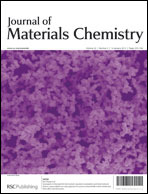The processing parameters for photoanodes that are printable in a room-temperature (RT) continuous process for dye-sensitized solar cells (DSCs) were optimized by the use of Genetic Algorithm (GA). The photoanodes were prepared at RT from mixtures of partially dyed-TiO2 (PDT) with various sizes and dye-loadings and were subsequently compressed for the fabrication of PDT films with different compositions, nanoporous structures, and thicknesses. According to our decision parameter design, there were 220 different cases, from which only 30 chromosomes for each generation were selected for the testing of photovoltaic performance to determine the global optimal point in power conversion efficiency (η). After 7 generations (i.e., only 210 chromosomes tested out of 220), η reached 6.02%, which was 22% higher than the value reported previously without the aid of a GA. The photoanode composed of a mixture of 14, 21, and 40 nm TiO2 with different dye-loadings and compressed to a thickness of 8.0 μm under 94 MPa showed the highest η (short circuit current = 12.03 mA cm−2, open circuit voltage = 685 mV, fill factor = 72.8%). A comparison of the photovoltaic parameters and characteristic charge transport properties revealed that sparsely dyed small TiO2 provided an efficient electron transport route to increase the short circuit current. The role of large TiO2 dyed up to monolayer coverage, on the other hand, was also disclosed to partially increase the short circuit current by light scattering. We hope that the GA-assisted photoanode optimization, presented here, will encourage new directions in research while providing an efficient RT printing process for the continuous fabrication of DSCs.

You have access to this article
 Please wait while we load your content...
Something went wrong. Try again?
Please wait while we load your content...
Something went wrong. Try again?


 Please wait while we load your content...
Please wait while we load your content...